In 1963 a small-scale archaeological excavation took place on the site of HMP Erlestoke in Wiltshire when it was a different institution with items found dating back to the Bronze Age. Sixty years later men from HMP Erlestoke, now a category C prison, have been taking part in a community dig with a difference.
Supported by The National Lottery Heritage Fund, thanks to money raised by National Lottery players, the 'Digging for Erlestoke’ project has been designed to give the men taking part, and wider prison community, access to archaeology. Independent evaluators will assess the potential impact of archaeology and heritage on the wellbeing of the men. Led by Leigh Chalmers, our heritage inclusion manager, colleagues from across the organisation shared their specialist skills and knowledge.
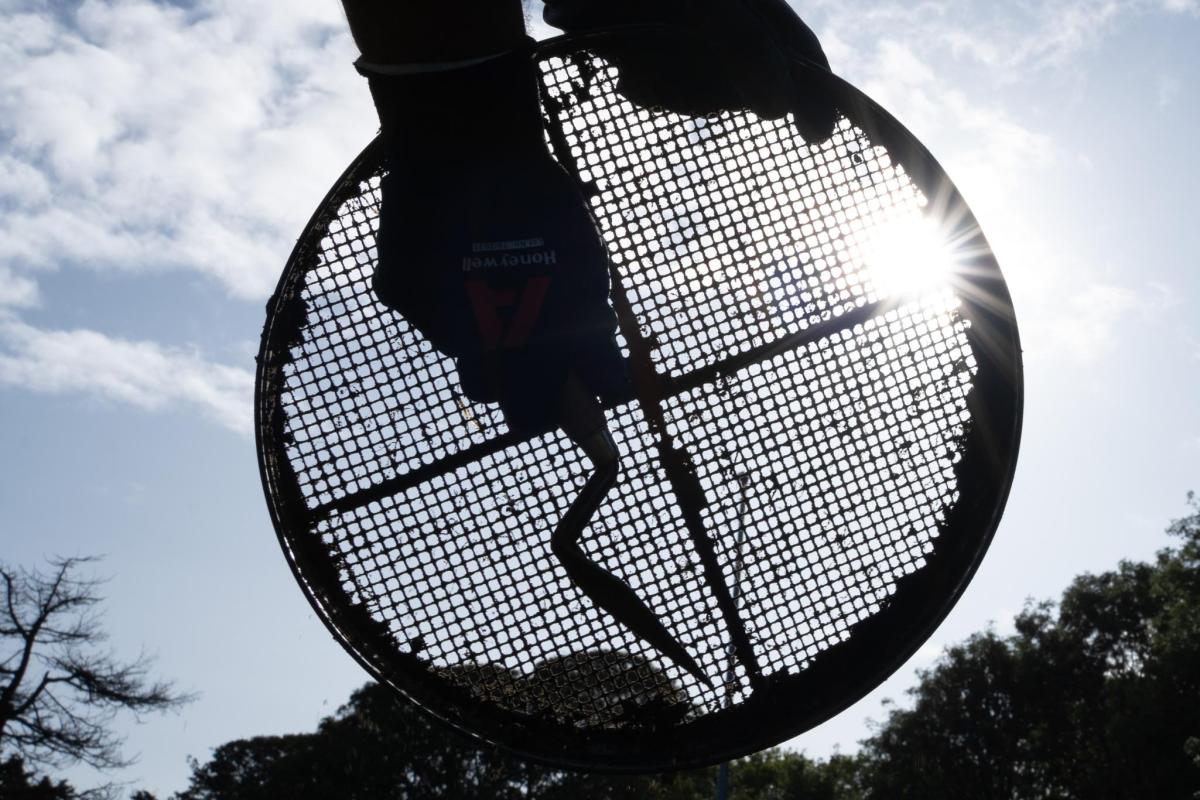
Sieving on site ©Wessex Archaeology
Due to the nature and restrictions of the site location, there were very specific areas where any activity could take place and it was focused to the south of the former 18th Century manor house now occupied by the Education Centre. Elizabeth Williams, Education Manager, HMP Erlestoke, explains, “Our approach to education at Erlestoke as part of rehabilitation and preparing the men for their release is all about creating a breadth of opportunity. When we started the Digging for Erlestoke project we knew it would be a completely different experience to anything we’d ever undertaken before. Although the logistics have been a little challenging at times, there has been such a positive impact on the men involved in the project and the wider ripples it has created across the wider prisoner community. From using the dig data in our maths lessons to the test pit stratigraphy in horticultural courses, artefacts to inspire in artwork to requests for more archaeology books in the library, the project has really sparked an interest across the prison. Partly this is because it is really relatable as it’s happening on site and linked to their past, present and future and the project structure has enabled the men to be curious and engage in lots of different ways.’
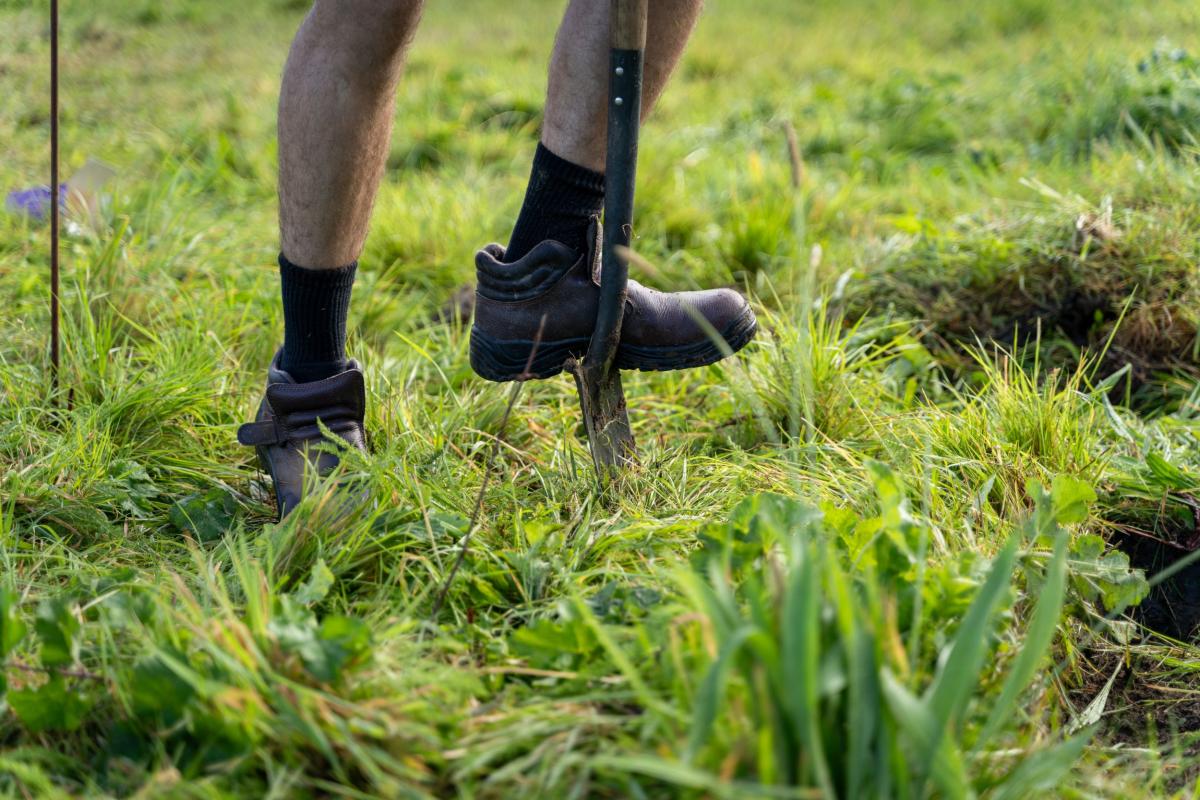
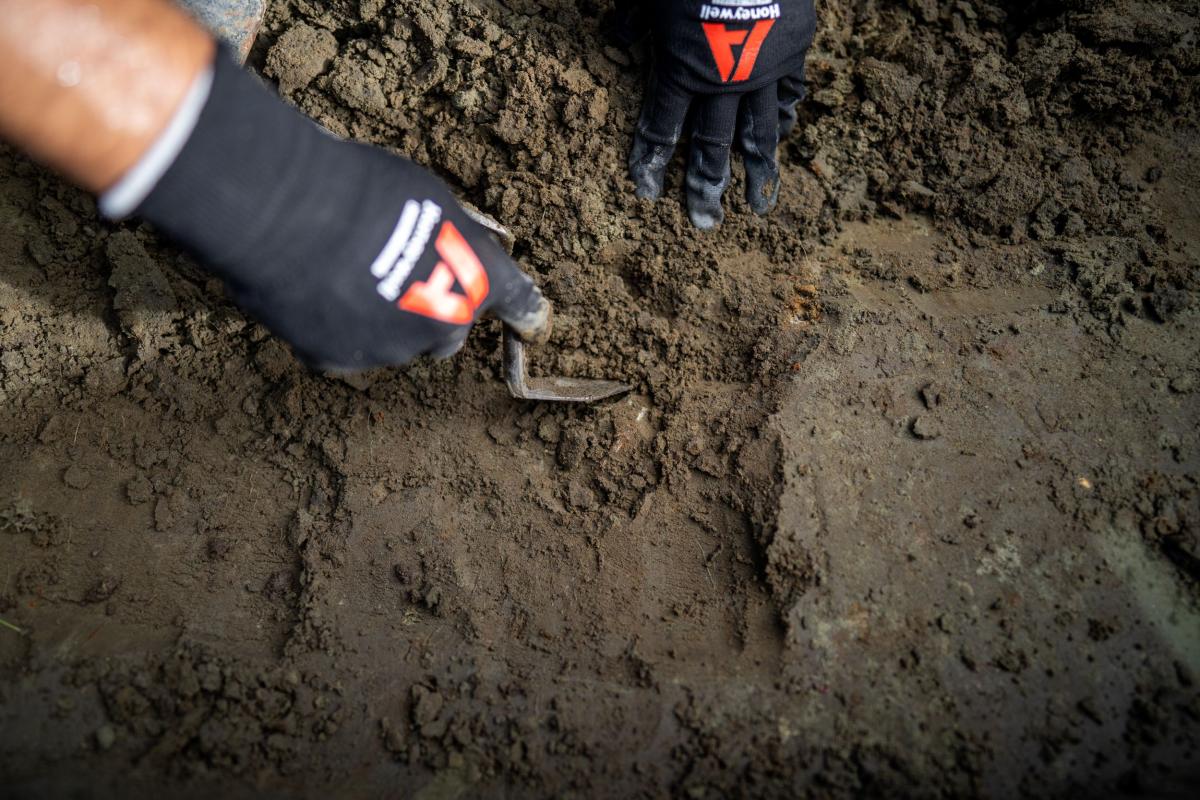
Careful turf clearance of a test pit, trowelling in the earth ©Wessex Archaeology
The men have been involved in all the different phases including researching the site history, learning how to do risk assessments, and taking part in the ground penetrating radar surveys with our geophysicists. Ecological habitat sessions run by FiveRivers and Dipper Ecology enabled the men to find out more about the local flora and fauna and the men made bird and bat boxes to go up around the prison site.
In September 2023 a group of 8 men, supported by archaeologists Lee, Steve and Eva, conducted test pitting over four weeks. The keen eyed excavators worked together and independently and impressed our team of archaeologists with their determination and ability to quickly assimilate new skills. By the end of the test pitting phase the men were confident marking out and carefully digging test pits, able to select and use appropriate tools, recognised changes in stratigraphy, recorded plans of the test-pits and carried out initial identification of finds and processing.
Commenting on what it has meant to be involved one of the men said, ‘It has been really interesting learning about the different artefacts and the processes around finding them. When I was taking part in the actual dig it really felt like a treasure hunt and the more items we uncovered the more we wanted to dig for more. I also enjoyed working with a variety of different people who treated me like just another work colleague rather than a prisoner and for that I am really grateful.”
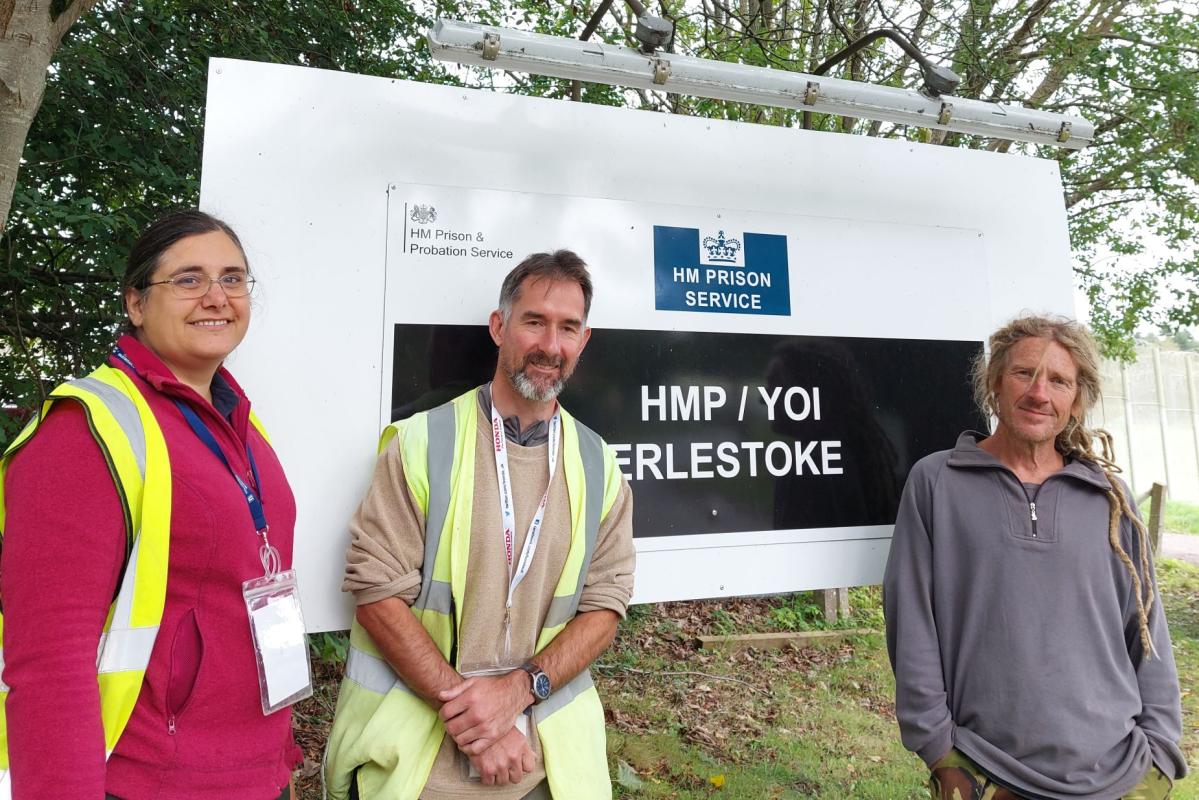
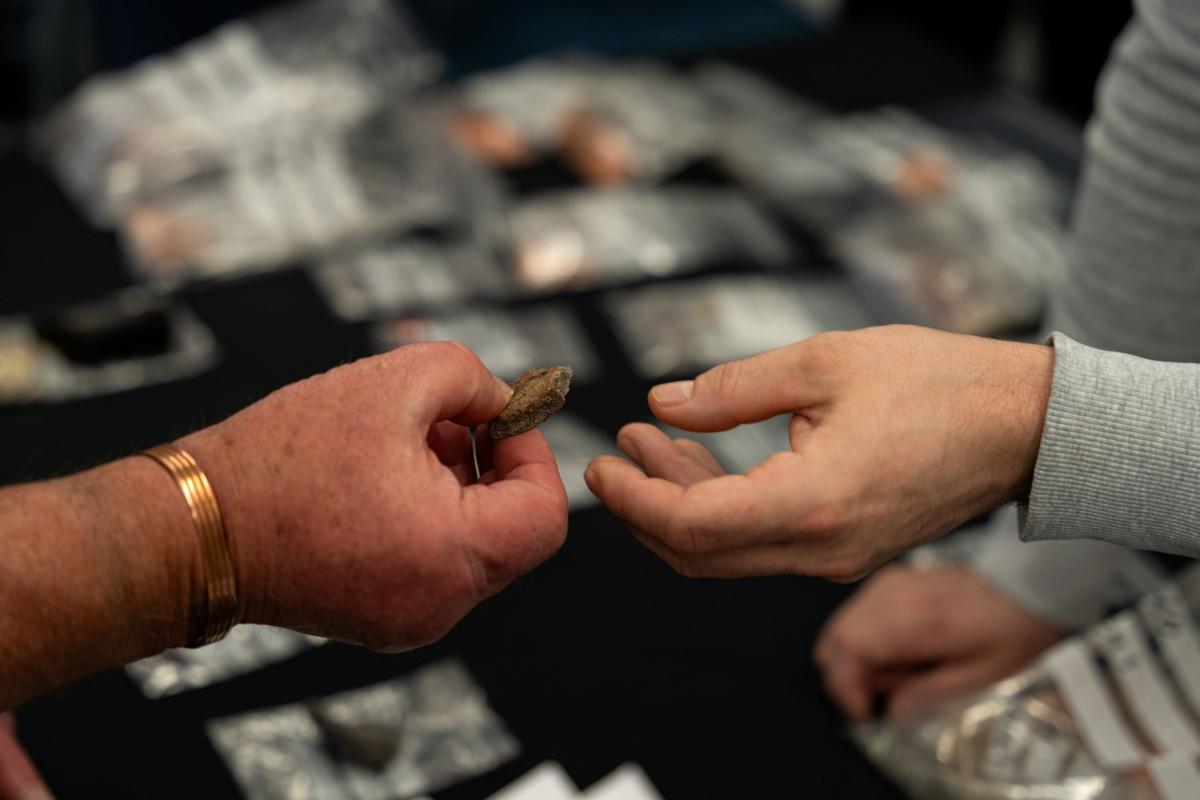
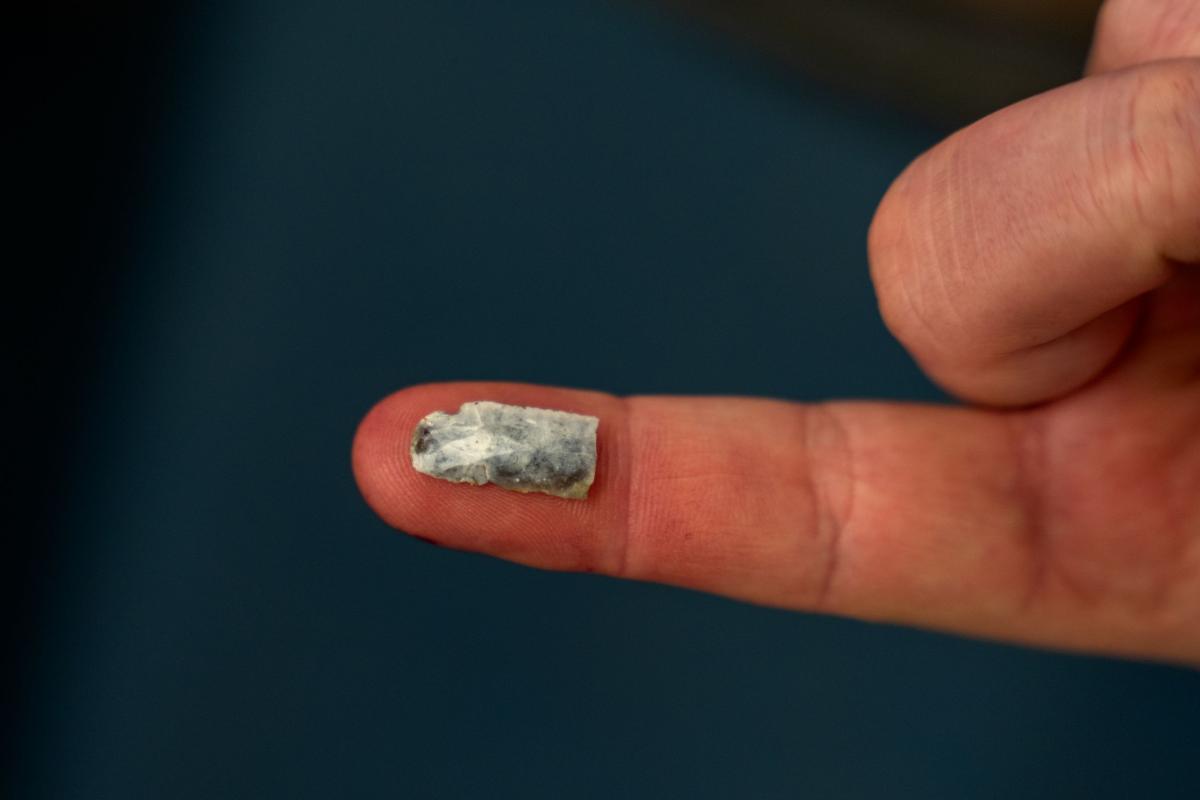
Eva, Steve and Lee outside HMP Erlestoke, finds from the dig are discussed and shared, the broken blade of a microlith fits onto a fingertip ©Wessex Archaeology
After sessions processing and recording the finds, the highlights found included a collection of Mesolithic flints as well as Romano-British pottery, fragments of Medieval pottery, 18th Century glass and a piece of clay pipe.
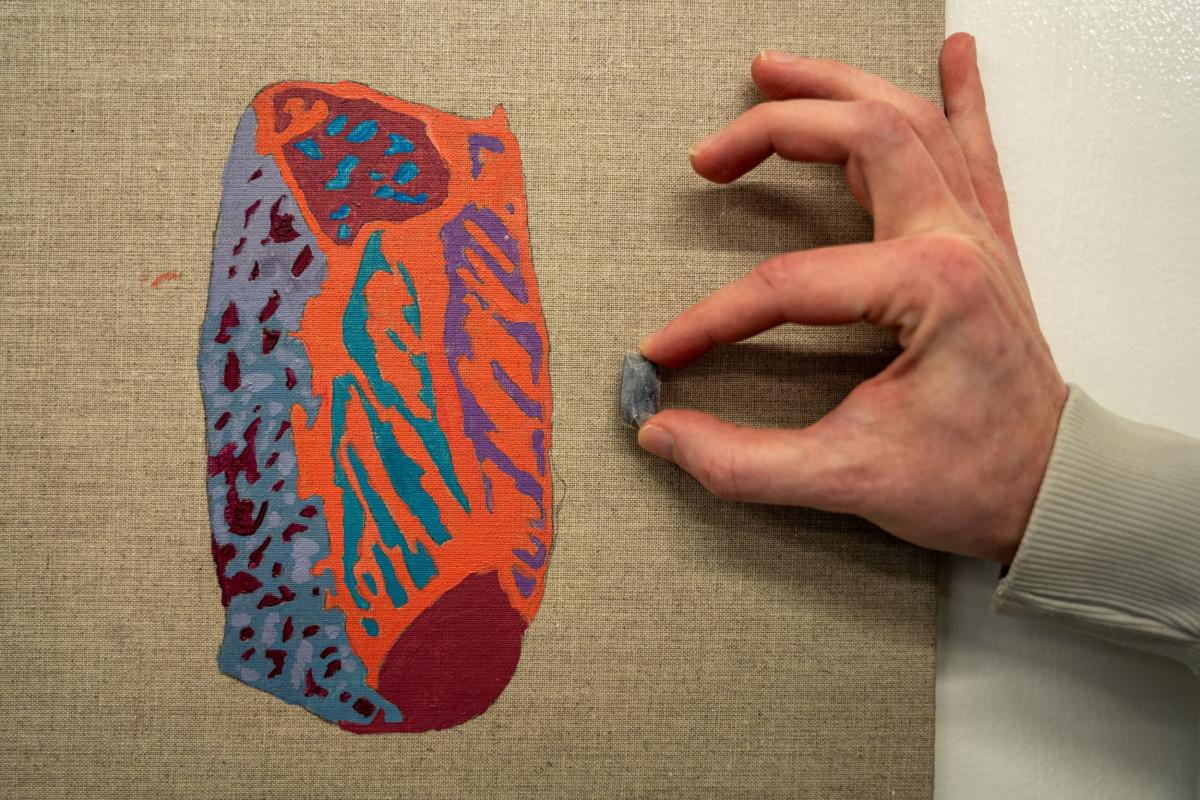
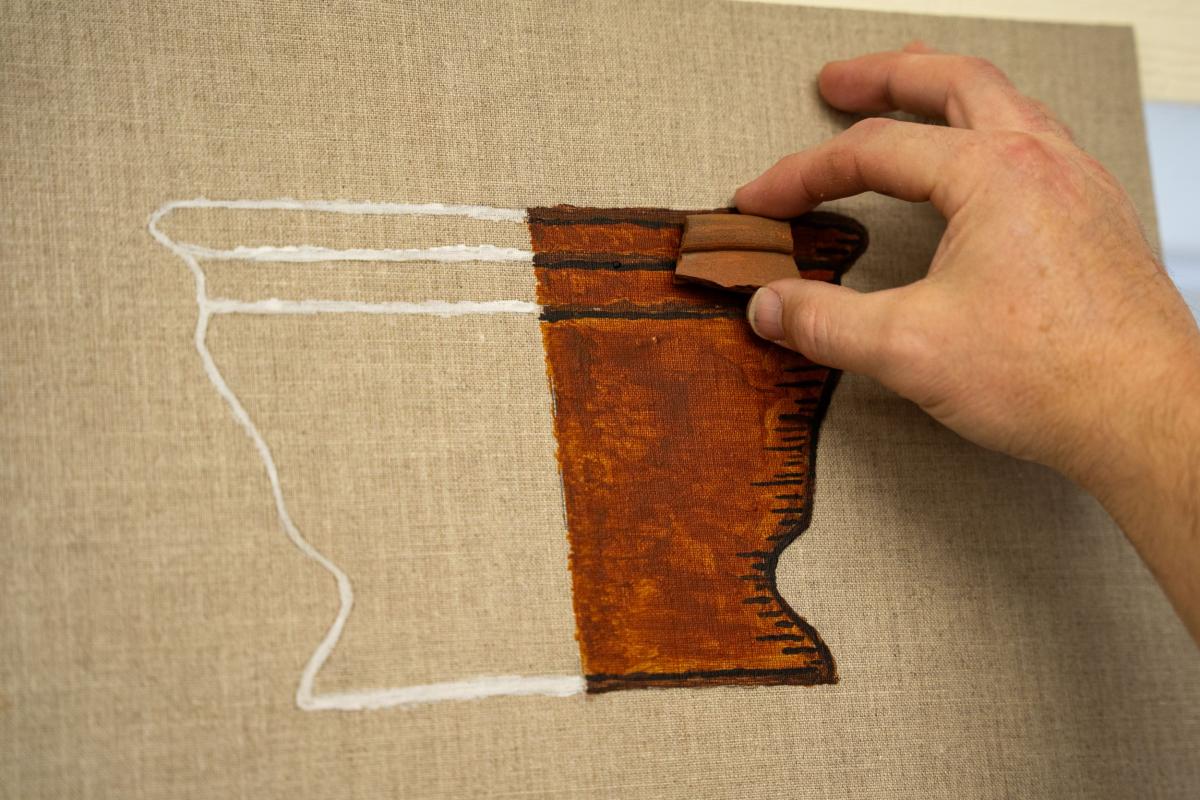
Two pieces of art inspired by the dig: Mesolithic flint painted on canvas and painting inspired from a rim sherd ©Wessex Archaeology
After a series of sessions with Nancy, one of our Finds Illustrators focused on the Mesolithic flints they had found, the men progressed onto a more abstract approach to documenting the finds. Artist Sue Martin encouraged the men to enlarge the precise detailed small illustrations onto much larger pieces of work painted onto natural canvas. For some men who hadn’t taken part in the dig, it was an opportunity to look afresh and to hear about the project for those who took part. The next stage will be for the men to write the post excavation report to ensure that the discoveries are added to the Mesolithic archaeological record of the area. There’s also plans underway to share the findings with the community.
